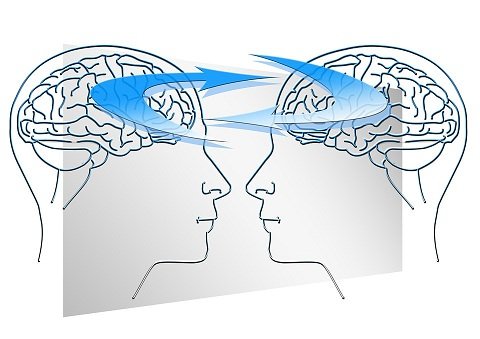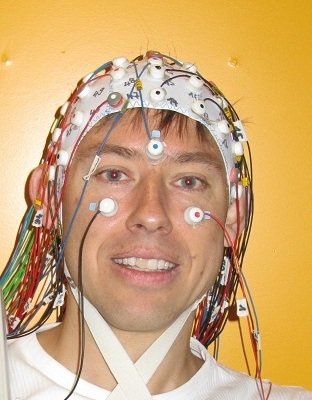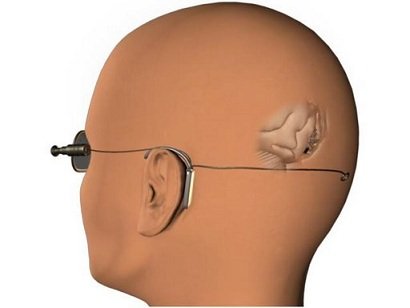Moving From Brain-Computer Interface (BCI) To Brain-To-Brain Interface (BBI) - Human Telepathy; The Future Way Of Communication
Introduction
I'm sure you've heard or have seen the movie series "X-men" and the telepathic ability of Professor Charles Xavier. In one of the scenes that piqued my interest, Charles Xavier was in a class lecturing people, but in the instance of time, he needed to pass a certain information to someone, he selectively sent the message directly to the person's brain without even uttering a single word. Mehn, I was like - holy shit!! Is this even possible in reality? So I had to take up a research... Well, before you scream "impossible", just hang on and read up. In this post, we will be looking at the possibility of replicating the same phenomenon technologically. We won't be talking about mutants and superpowers here.

[Image Source: Pixabay. CC0 Licensed]
The mouth has remained at the apex of communication between humans, but just like every other aspects of our lives, we are not straight-jacketed to be conformed to a particular law or rule, and that applies to the field of communications too. And just as you know; this era is such that has been witnessing "impossible" feats - no wonder it has been inferred by many that technological advancements is mind-limited (as long as you can conceive it in your mind, the actualization would just be a matter of time). Have you ever thought about the process by which someone can directly eavesdrop into your mind to grab your thought? Or putting it fairly; have you considered an option of having a discourse with your friend mind-to-mind? Now that's beginning to sound like a mission-in-insanity, lol. But hey!! This kind of technology has already arisen, and it is called Brain Telepathy. Looks like our mouth is about to be sidelined - R.I.P mouth.
The journey so far
Even though brain telepathy is grouped under emerging technology, the idea behind this has been age-long, though they were basically made referenced to in relation to extrahuman abilities, but here, we ain't looking at that, but the replication of the same through technology. Like we may have known, the verbal communication is limited in usage and application by tones, accent, vocabulary, language barriers, and all whatnot (not to mention the deaf/dumb people that can't even use the verbal communication), and this has created a need for some other types of communication. Okay, even the technology of gesture recognition (sign language) as a way of communication is also limited (how would someone without hands; for example; perform sign language?), but here we are looking at circumventing all these limitations.
Just very recently (in the late 90's), there was a consensus move by some group of neuroscientists from Duke University to map out the area of the brain that is directly related to communication, and also to study the patterns of brain waves for different types of thought relating to different types of communication [ref]. - and this was a major breakthrough that has brought us a step further in the actualization of brain telepathy. The brain; like we know; is made up of; among other things; the neurons, which the primary function is to carry nerve impulses in form of electrical signals. Now, this is the idea behind brain telepathy - to pick up these signals as they are generated by the brain.

[Image Source: Pixabay. CC0 Licensed]
Now some may start to look at this as the technology of Brain-Computer Interface (BCI), but it is worthy to note that this is somewhat different, and the Brain telepathy; though incorporating the technology of the BCI; is majorly hinged on the technology of BBI (Brain-to-Brain Interface). Unlike the BCI which interfaces the human brain with only our devices (which has enabled us to control only computers and device with just the thoughts), the BBI enables us to send neural impulses directly from the source brain to the destination brain without passing through the intervening medium. But for this to happen; there are some processes and requirements to be met. First of all, we need to detect the brain waves as they are generated.
Detecting the brain waves
One of the properties that allows for the BBI is the unique communications between the brain cells; this is called Synaptic transmission, and this includes all the activities that are carried out by the brain (cognition, efferent domain, psychomotor activities, etc), and the patterns of these brain waves get rearranged base on the current activity of the brain. For example: The pattern of the brain wave when you're thinking about examination is not the same as when you're thinking about sex... that came out too raw, lol. But for these brain activities to be detected, there are some ranges of techniques you can employ - starting from the easiest.
EEG (Electroencephalography) technique - Non invasive
In this technique, an EEG headgear is usually worn over the head, and the function of this headgear is to detect brain activities as they are generated by the brain, and transmitting them to a computer system, which interprets them. But when the signals get to a computer system, and after processing, how do the signals get to the receiving brain? Well, it is also worthy to note that the brain does not only generate and send signals, but it can also be receptive to signals, but again, there should be a reception technology. Because we're still under the non-invasive mode; for the reception of the brain signals, a device known as the Transcranial Magnetic Stimulation (TMS) device is used to generate torrents of magnetic field over the head, thus generating electrical signals which will be transmitted directly to the brain.

[Image Source: Pxhere. CC0 Licensed]
But considering the grumpiness of these devices, it may not look too ethical carrying them about. Also, wearing this over an extended period of time could be discomforting. But hey!! Another option has arisen, which allows for both the transmission and the receiving device to be surgically implanted within the cranium.
ECoG (Electrocorticography) technique - Invasive
In this type of technique, unlike the non invasive type, the electrodes that detect the signals are surgically implanted into the person's skull. The different between the EEG and the ECoG is that; the EEG detects the activities of the brain (in form of electrical impulses) from outside the skull, but the ECoG detects them from inside the skull. And this provides better resolution of signals than the non-invasive, though it carries potential risks - which include post operation risks and all whatnot; so the choice is yours to make.
This type is further divided into two techniques: When the ECoG electrode is implanted within the skull but not directly inside the brain, then it is the partly invasive technique. But when the ECoG electrode is right inside the brain (the gray matter), then it is the fully invasive technique. Though this carries the biggest risk of all, and also has the propensity of forming scar-tissues over the electrode over time, but it provides the best of the signals - because there is no attenuation (loss of signals) as they are generated.

[Image Source: Wikimedia Commons. Author: Mohamad Sawan. CC BY-SA 1.0 Licensed]
After the signals are generated, there is also need for the receiving brain to have the Transcranial Magnetic Stimulation (TMS) device. But since we're doing the invasive type, the TMS device would also be surgically implanted into the brain - so by inference, the ECoG and the TMS device would be implanted. But recent technologies are moving to hybridize both devices in one, so a single device would serve in full capacity of both the transmission device and the reception device. But one reservation some people could have about this is in the area of privacy - because they could turn our thoughts (which were meant to be ours by prerogative) to something that can be eavesdropped upon. Well, except there would be further advances to selectively transmit just a specific thought, while concealing the rest - and if this becomes possible, then this would be the future of private communications Until someone begins to hack the human brain, lol.
Conclusion
As technology keeps emerging, new boundaries are crossed, and we've seen yet another one crossed - communicating without using the audible sounds, what can't technology do? The potentials in this type of technology are almost limitless, maybe with time, we wouldn't even need our mouths again. After all, communication is all about passing information, and this can be done without the mouth.
Thanks for reading
References for reading:
- Science of brain telepathy
- Principles of BBI
- Brain communication via internet-enabled EEG headgear
- How Brain-computer interface works
All images are CC Licensed and are linked to their sources


gif by @foundation
This is one aspect of technology I would really love to see come to complete fruition. Personally I doubt if (BBI) will ever make it further than its test zones. But what can I say? who knew that one can ever for a split second stay in Africa and speak to someone in Europe? Lets see how it goes, I got my eyes on this one
Before the advent of airplanes, who ever thought that a heavier-than-air flying machine would be possible? That's the nature of technology..
I saw a video of a type of implant to the brain that helped a man that had Parkinson's disease control the involuntary shaking. The man, Mike Robbins did a deep brain stimulation. We may just be a touch away from running a brain telepathy communication.
Wow! This is so awesome.. Looks like this would be a more potent way to treat Parkinson's disease.
Technology never ceases to amazing us
Another great post. You always have them at hand.
Baba, but dis one wey utopia no gree wake so... Wetin man go do now with dis pinishin kudi. Lol 😂
Lol. Baba d tin weak pesin oo. But wetin man go do naa?
Notin do us shaa
Memories of X-men tho, seriously technologies like this make me think one domt have tohave sex to give birth just hugs or even thinking of it.
PS. Your conclusion #winks
Hahahaha. Maybe we can even 3D print the babies :p
This post has been voted on by the steemstem curation team and voting trail.
There is more to SteemSTEM than just writing posts, check here for some more tips on being a community member. You can also join our discord here to get to know the rest of the community!
You got a 8.39% upvote from @emperorofnaps courtesy of @bidbot.credits!
Want to promote your posts too? Send 0.05+ SBD or STEEM to @emperorofnaps to receive a share of a full upvote every 2.4 hours...Then go relax and take a nap!
Thanks a lot